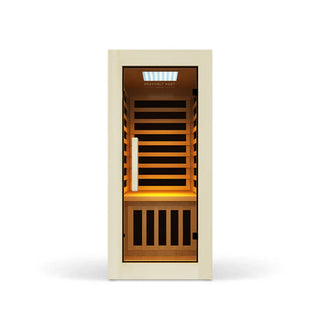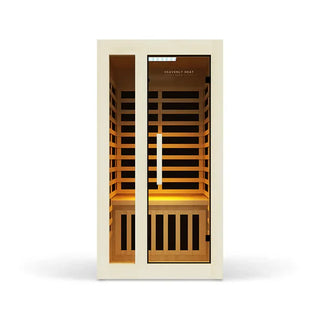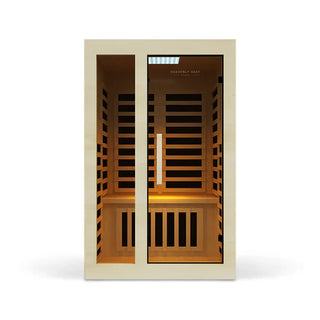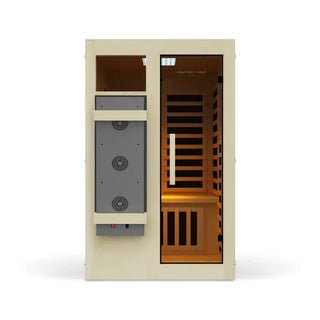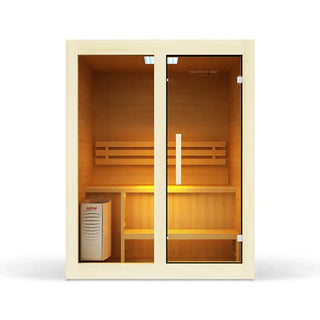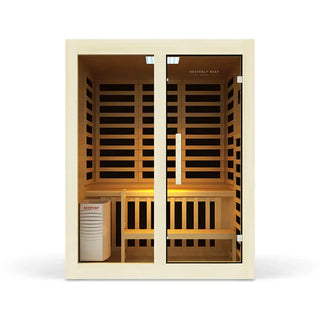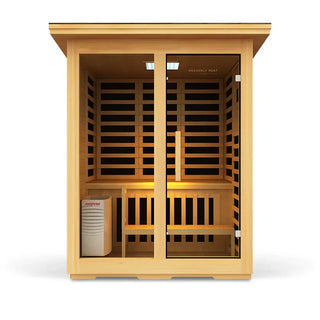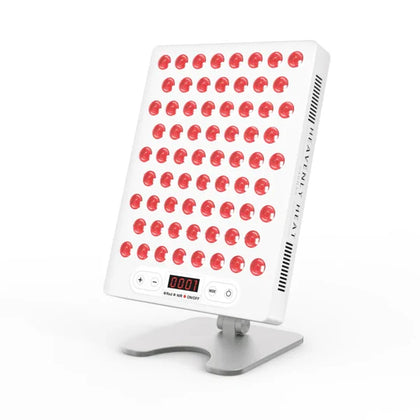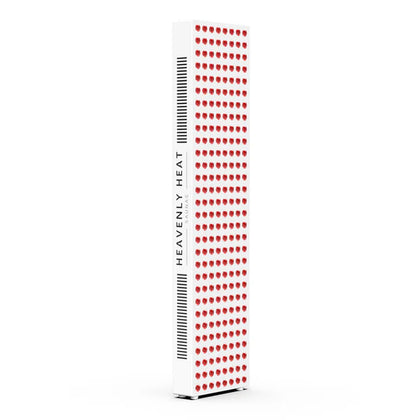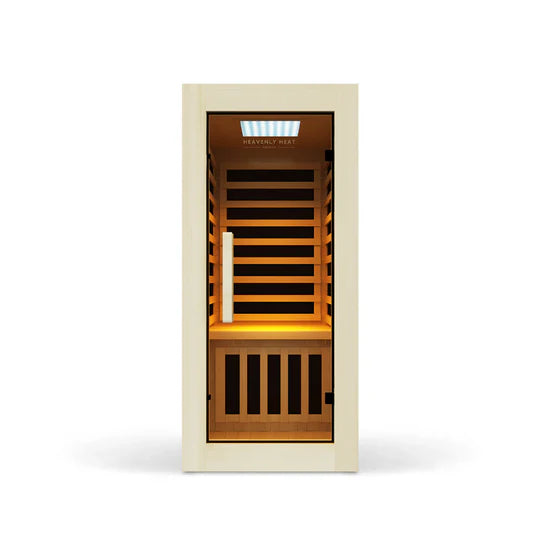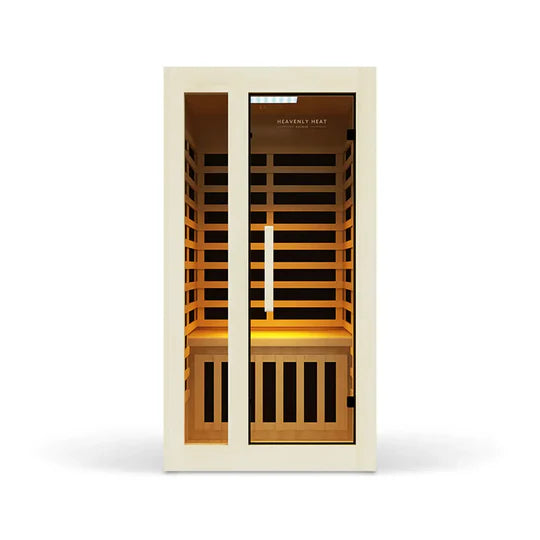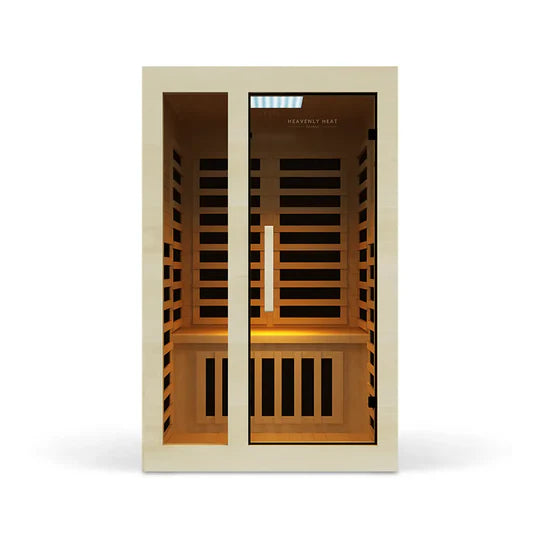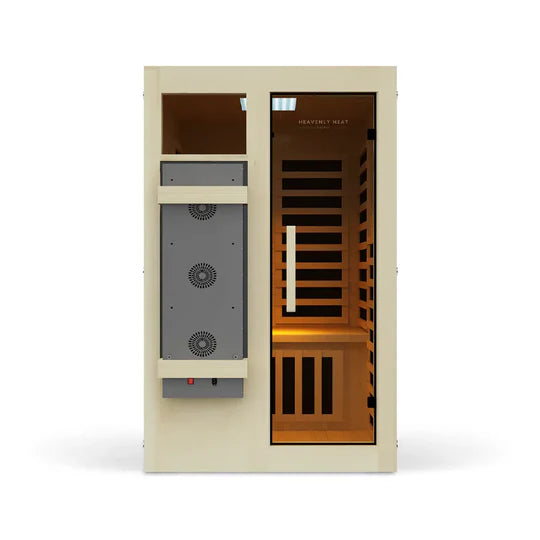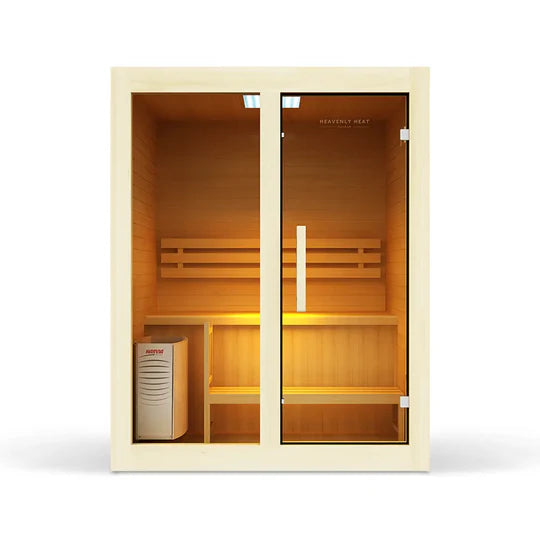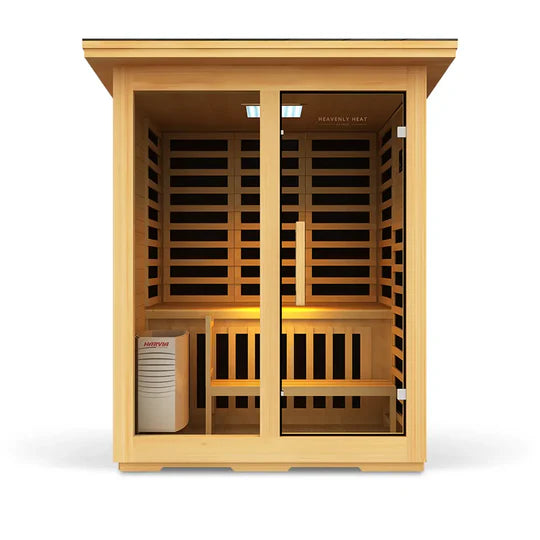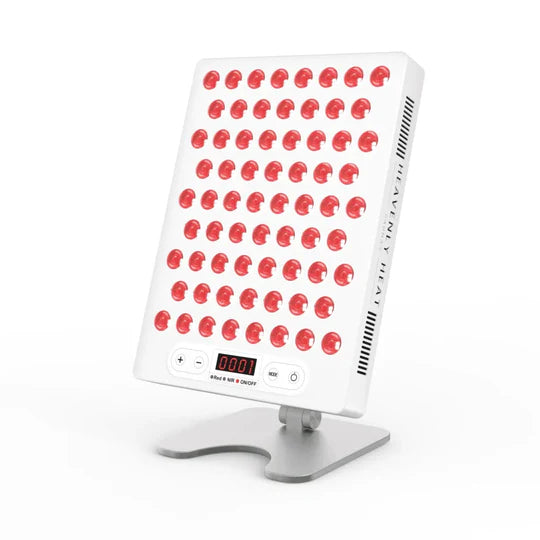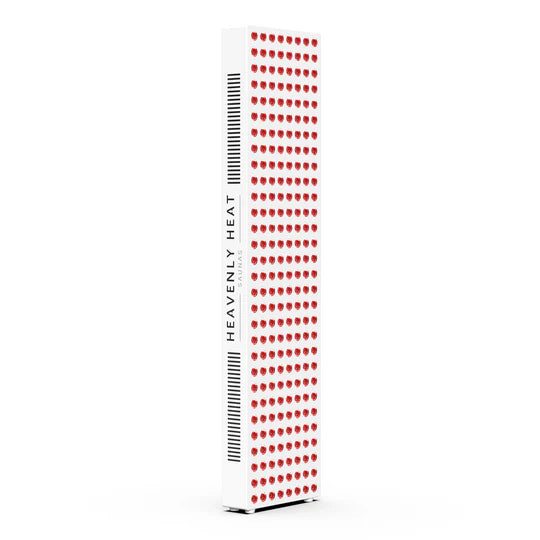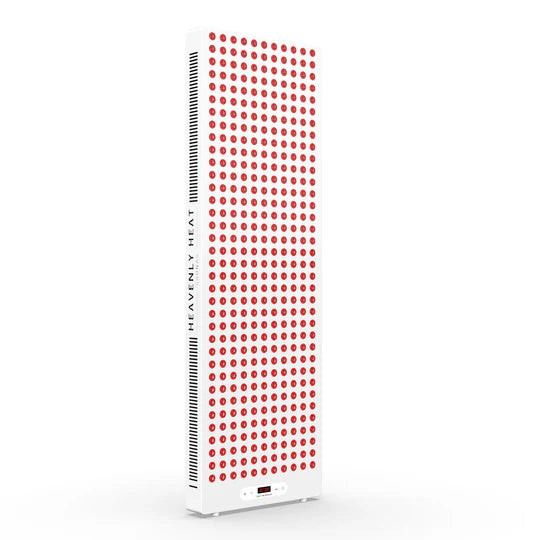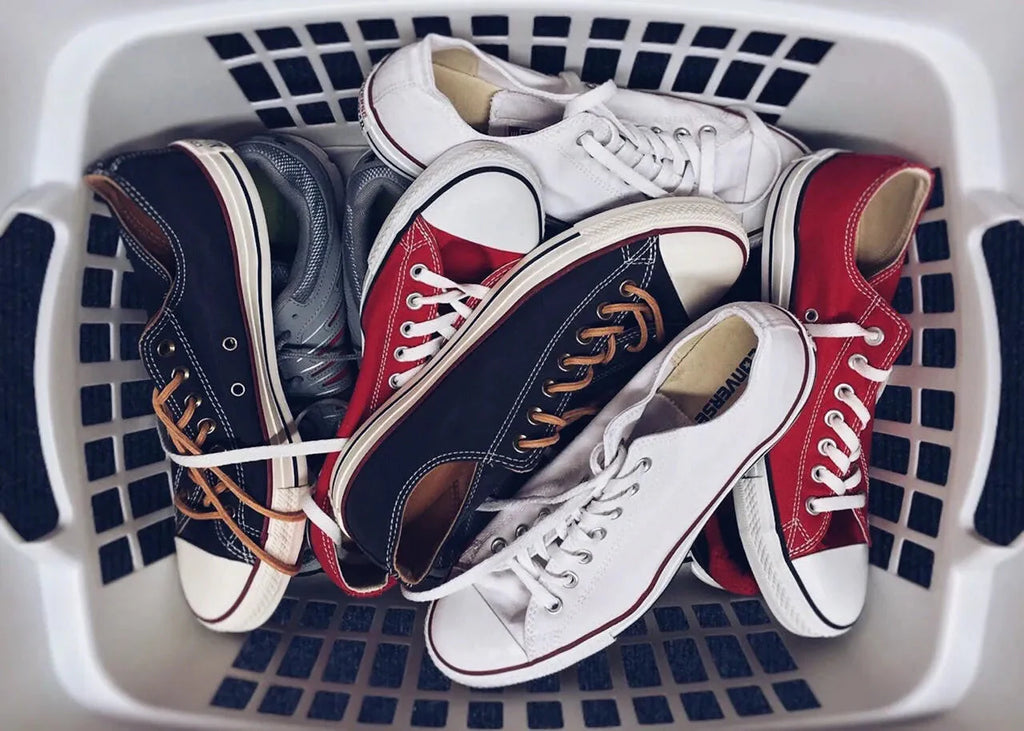Does Red Light Therapy Work For Stretch Marks?

Red light therapy is widely praised for its skin-rejuvenating benefits, helping to improve collagen production and skin texture.
But does it work for stretch marks? These stubborn streaks, affecting 8 out of 10 pregnant women, often leave skin looking scarred and uneven.
While stretch marks aren’t harmful, they can impact your confidence. If you’re seeking a way to reduce their appearance, red light therapy may offer a promising solution.
Table of contents
What are Stretch Marks?
The Mayo Clinic explains that stretch marks (striae) are indented streaks that form when the skin is stretched rapidly, commonly appearing on the abdomen, breasts, thighs, buttocks, or upper arms. These marks are especially frequent during pregnancy, particularly in the last trimester, but they can affect anyone undergoing significant body changes.
Several key factors contribute to the development of stretch marks:
Rapid skin stretching: Caused by pregnancy, puberty, or sudden weight gain or loss.
Hormonal changes: Elevated cortisol levels weaken the elastic fibers in the skin.
Genetics: A family history increases your susceptibility.
Corticosteroid use: These medications reduce skin elasticity over time.
Certain medical conditions: Disorders like Cushing syndrome or Marfan syndrome may make the skin more fragile.
Bodybuilding and anabolic steroids: Rapid muscle growth can overstretch the skin.
While stretch marks are neither painful nor dangerous, they can affect one’s confidence and comfort in social situations or when wearing certain clothing. Though they may fade naturally over time, they rarely disappear completely.
Managing stretch marks includes using moisturizers with ingredients like hyaluronic acid or retinoids, or exploring laser therapy for more stubborn cases. Fortunately, most people learn to embrace these skin changes as part of natural growth. With patience and care, their appearance can be minimized,offering both cosmetic relief and peace of mind.
The Science Behind Red Light Therapy and Stretch Mark Reduction
Scientific studies suggest that red light therapy, also known as LED photobiomodulation, can significantly improve the appearance of stretch marks.
In a large-scale clinical study conducted at Centre Esthesio Clinic in Paris, 103 patients with stretch marks ranging from recent to over 20 years old underwent a series of red light therapy sessions, often combined with radiofrequency.
On average, each patient received 17.75 sessions targeting common areas such as the abdomen, buttocks, thighs, and hips.
The study reported visible improvements in both the color and texture of the stretch marks, with both subjective (patient self-assessment) and objective (clinical evaluation) criteria confirming progress over time.
Researchers Jean Paul Tedgui, Philippe Blanchemaison, and Claude le Goff emphasized that unlike traditional treatments, such as dermabrasion, laser therapies, or topical agents like tretinoin, LED phototherapy shows promise in activating fibroblast cells, which play a key role in skin regeneration.
These findings underscore red light therapy’s emerging role as a safe, non-invasive option for those seeking long-term improvement in skin appearance.
Can red light therapy completely remove stretch marks?
- You can't fully get rid of stretch marks, even with red light therapy: Stretch marks are permanent. Red light therapy and other treatments can help, but they won’t erase them completely.
- Red light therapy can make stretch marks look better over time: This treatment may improve skin texture and reduce how visible stretch marks are, but results take time and won’t be perfect.
- Other treatments can also help, but none will remove stretch marks completely: Things like retinoid creams, microdermabrasion, and massage can fade stretch marks a bit, but like red light therapy, they won’t fully remove them.
What are the benefits of Red Light Therapy for stretch marks?
Increases collagen levels
- Collagen helps your skin stay firm and smooth: Collagen is an important protein that helps keep our skin firm and elastic. It plays a crucial role in reducing the appearance of stretch marks by strengthening the skin and improving its texture.
- Stretch marks happen when your skin loses collagen too fast: When our skin stretches too quickly, it can tear the collagen fibers, leading to those noticeable marks.
- Red light therapy tells your skin to make more collagen: A study published in the Journal of the American Academy of Dermatology looked at how low-level red and infrared light therapy boosts collagen production.
- Just a few sessions can start to rebuild your skin: The researchers found that this type of light significantly increased the levels of collagen, elastin, and hyaluronic acid in skin cells. After just a few days of treatment, the skin showed more collagen production.
- More collagen means fewer visible stretch marks: This study suggests that red light therapy could be a powerful tool for improving skin and reducing the visibility of stretch marks.
Improves blood circulation
- Good blood flow helps your skin heal stretch marks: When your blood flows better, your skin gets more oxygen and nutrients. This helps it heal faster and makes stretch marks less noticeable over time.
- Red light tells your blood vessels to open up: Scientists found that red and near-infrared light can make your blood vessels wider. This process, called vasodilation, helps more blood reach your skin.
- A special red light (670 nm) improves circulation: Using 670 nm red light on the skin helps release something called nitric oxide, which tells your blood vessels to relax and let more blood through.
- Better circulation gives your skin what it needs to look better: With more blood reaching your skin, it can repair itself more easily. That’s why red light therapy may help reduce the look of stretch marks over time.
Reduces inflammation
- Inflammation makes stretch marks harder to heal: When your skin is inflamed, it becomes harder for stretch marks to heal. Calming down this inflammation can help your skin recover faster and look smoother.
- Red light therapy helps calm irritated skin: A 2017 study by Michael R. Hamblin and his team found that red light therapy (also called photobiomodulation) can lower inflammation in the skin, making it less irritated and more balanced.
- It also protects healthy skin from damage: The same research showed that red light therapy not only reduces inflammation but also supports the skin’s natural defenses, helping it stay strong and fight off damage.
- Less inflammation means better-looking skin: By reducing inflammation, red light therapy helps improve the appearance of stretch marks and supports the skin’s overall healing process.
Other Therapies that help with Stretch Marks
Microneedling
- Microneedling tells your skin to start fixing itself: Microneedling uses tiny needles to gently poke the skin. This action signals your body to begin healing and making more collagen and elastin, the natural proteins that keep skin firm, smooth, and healthy. As these build up, stretch marks start to fade.
- With time, stretch marks look softer and less noticeable: As your skin repairs itself through microneedling, the stretch marks gradually become lighter in color, smaller in size, and less visible. The changes don’t happen overnight, but with a few sessions, many people see real improvement.
- Microneedling has worked for many real people: A study done by the Department of Dermatology looked at 20 people between ages 17 and 45. Most of them noticed smoother skin, better color, and reduced appearance of stretch marks after microneedling sessions.
- It’s a simple and safe option to try: Microneedling doesn’t involve harsh chemicals or surgery. It’s a gentle, low-risk treatment that works with your body’s natural healing process, which is why many people find it worth trying for stretch marks.
topical retinoids
- Topical retinoids help by renewing your skin faster: Another option that can help with stretch marks is using topical retinoids, like tretinoin cream. These work by speeding up skin cell turnover and boosting collagen, the protein that keeps your skin firm and smooth.
- They make new stretch marks fade and skin look healthier: This helps fade new stretch marks and makes your skin look healthier over time. When used regularly, they can improve your skin's texture and tone.
- Studies show tretinoin works on early stretch marks: One study published in JAMA Dermatology tested 0.1% tretinoin on people with early stretch marks. After six months, 80% of those using tretinoin saw clear improvement, while only 8% of those using a plain cream saw any change.
- Tretinoin even reduced the size of stretch marks: The stretch marks actually shrank in size. So if your stretch marks are still fresh, tretinoin could really make a difference.
Tips for Getting the Most Out of Red Light Therapy for stretch marks
Choose the Correct Wavelength
- The right wavelength makes a big difference: To get the best results from red light therapy for stretch marks, the type of light you use really matters. The correct wavelength helps the light reach deep into your skin where it can actually make a change.
- Using 600–650nm light works best for skin: Experts suggest using red light between 600 and 650 nanometers. This range goes deep enough into the skin to trigger healing and renewal where stretch marks develop.
- This light helps your skin make more collagen: When the light hits the right depth, it boosts collagen production. Collagen is a natural protein your body makes to keep skin strong, elastic, and smooth.
- More collagen means fewer visible stretch marks: With increased collagen, your skin can repair itself better. Over time, this helps your stretch marks fade and makes your skin look firmer and healthier.
Select the Right Size Panel
Choosing the right size red light therapy panel is key to getting the best results. A larger panel lets you treat multiple areas at once, which is especially helpful for bigger stretch mark areas.
For instance, if you want to focus on your thighs and abdomen, a wider panel covers more skin. This means you get consistent exposure to the therapy, leading to better results overall.
Prep Your Skin Before the Therapy
To get the most out of red light therapy, you need to prep your skin properly. First, give the area a good cleanse to wipe away any dirt or lotions. This step is crucial because clean skin lets the light penetrate better.
Maintain a Safe Distance
Most experts recommend staying about 6 to 12 inches away, but this can vary based on how powerful your panel is. Why is this so important?
If you get too close, you might risk overheating your skin, which isn’t comfortable or safe. On the other hand, standing too far away means you won’t get the full benefits of the light.
So, take some time to experiment with different distances until you find what feels right for you.
Target the Area Where You Have Stretch Marks
Target your therapy on areas with stretch marks for better results. For instance, if you also have stretch marks on your thighs, direct the light there as well. If you don’t focus on specific spots, you might not see the improvement you’re hoping for.
Consistency is Key
To effectively tackle stretch marks with red light therapy, consistency is key! Aim for at least three sessions a week for several weeks to notice real improvements.
Each session should last about 10 to 20 minutes. By sticking to this routine, you’ll boost collagen production and help improve the appearance of those marks over time.
Combine with Healthy Habits
To get the most out of red light therapy for stretch marks, adding some healthy habits can make a big difference! Start with a balanced diet packed with vitamins C and E, which are great for your skin.
Staying hydrated is also key, as it helps keep your skin elastic and healthy. And here’s a tip: exercise can really boost your results! Regular physical activity improves blood flow, which means your skin can heal faster and look rejuvenated.
Monitor Your Progress
Tracking your progress is key to seeing how well red light therapy works for you. Take before-and-after photos to get a clear picture of how your stretch marks change over time.
Aim to check in on your results every few weeks. This regular assessment helps you decide if you need to tweak your therapy routine or even combine it with other treatments for even better results.
How long does it take for red light therapy to show results on stretch marks?
The time it takes for red light therapy to show results on stretch marks can vary based on factors like the age of the stretch marks, skin type, and treatment frequency.
Typically, you can expect to see visible results within a few weeks of consistent treatment. You may notice even better results sooner by making lifestyle changes, such as staying hydrated, eating a balanced diet rich in vitamins, and maintaining a regular exercise routine.
Can you do red light therapy for stretch marks at home?
- You don’t need a clinic to start red light therapy: You can definitely do red light therapy for stretch marks right at home, and it’s an excellent way to save money while fitting into your busy schedule.
- Doing it at home saves money and fits your lifestyle: Imagine skipping those pricey spa visits and treating yourself whenever you have some free time! Doing it at home means no appointments, no travel, and full control over your time.
- A good-size panel makes all the difference: Just find a red light therapy panel that’s big enough to cover the areas you want to treat. This helps you target stretch marks more effectively.
- Keep some distance for better and safer results: Stay about 6 to 12 inches away from the panel while treating your skin. That’s the sweet spot to get results without risking irritation.
- Following a routine is what brings real results: To get the most out of your therapy, stay consistent. Use it for 10–20 minutes, keep your skin clean before each session, and don’t skip days, routine is everything.
How often should you use red light therapy for stretch marks?
According to experts, you can expect to see results from red light therapy for stretch marks after around 10 to 20 sessions.
However, the speed at which you notice a reduction in the appearance of stretch marks can vary based on factors such as skin type, age, the severity of the marks, and overall skin health. Consistency is key for optimal results.
Does red light therapy for stretch marks hurt?
Red light therapy is a safe and painless way to help reduce the look of stretch marks. This treatment uses gentle light to boost collagen and skin healing, making your skin feel smoother and healthier without any discomfort.


